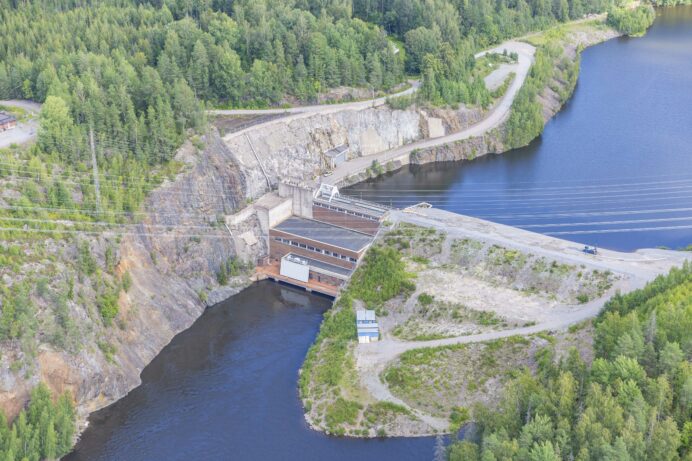
Located at Nokianvirta on the Kokemäenjoki river in Nokia, both turbines of the Melo hydropower plant are to be renovated. PVO-Vesivoima made an investment decision on the renovation. Scheduled to start in June 2025, the project will boost the balancing power needed in Finland. Repairs of the first turbine will take until late 2025, and the first turbine should produce electricity starting from December 2025. Repairs of the second turbine will begin in the summer of 2026.
PVO-Vesivoima has made a significant investment in the modernisation of hydropower. The increased volume of weather-dependent energy production has changed how hydropower plants are used. The renovation of the turbines in Melo is part of efforts to ensure the production of balancing power, which is increasingly needed by the Finnish electric power network.
The investment in the renovation of the turbines in the Melo hydropower plant is part of PVO-Vesivoima’s long-term investment and renovation programme.
“We monitor and measure the condition of our power plant equipment and actively repair and maintain the plants. In this renovation, the worn-out runners and guide wheels of both turbines at the Melo power plant, which have reached the end of their service life, and all wearing parts will be replaced. Ancillary equipment and the generators will also be maintained and inspected,” says Juha Kähkölä, PVO-Vesivoima’s Development Manager.
The renovation investment decision is a natural continuation of the development of the power plant – the turbines at the Melo power plant, which was completed in 1971, were renovated in 1998 and 1999. The stators and electrical automation have since been renovated, and Finland’s first bored pipe wall for a hydropower plant dam has been built in the earth dam.
The major renovation of the Melo turbines will be carried out by Andritz Hydro Oy.
Hydropower plants stabilise the electrical power system
The increased volume of weather-dependent energy in the electrical power system affects the use of hydropower plant equipment. This means the turbines need to be continuously adjusted to ensure a stable frequency in the power grid. In turn, this causes wear and tear in the equipment.
“We are committed to investing in the development of our power plants. Hydropower plants are one of the keys to stabilising our current electrical power system and maintaining security of supply. The electrical power system places high demands on the equipment. We are constantly developing both our operations and the technology to ensure that our equipment remains in good condition and can optimally meet the needs of the electrical power system,” Kähkölä explains.
“To ensure flexible electricity production, we are also piloting a short-term energy storage system using ultracapacitors at Kierikki on the Iijoki river, which will simultaneously save the power plant machinery from wear and tear. At Kemijärvi, we are exploring the possibility of building a pumped storage power plant for electricity storage.”
Additional information:
Juha Kähkölä, Development Manager, PVO-Vesivoima Oy, juha.kahkola@pvo.fi,
tel. +358 50 303 8622
PVO-Vesivoima Oy produces electricity with its hydropower plants on the Iijoki, Kemijoki and Kokemäenjoki rivers. The average total annual energy production output of the company is 1.7 TWh. The company is part of the Pohjolan Voima Group. www.pohjolanvoima.fi